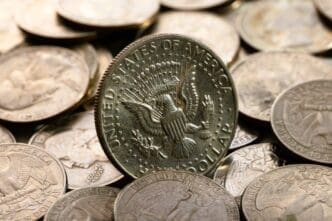President Donald Trump has announced an order to stop the production of pennies by the US Mint, pointing out that the cost to produce them exceeds their value. While eliminating the penny aims to curtail governmental waste, it inadvertently surfaces another financial issue: the increased cost and quantity of nickels required to fill the gap in small transactions.
Trump took to his Truth Social platform to criticize the excessive cost of minting pennies, which exceeds 3 cents per piece. However, halting penny production might lead to a surge in nickel production, leading to even greater expenses for the US Treasury, as each nickel costs 13.8 cents to manufacture and distribute.
A group named Americans for Common Cents argues that without the penny, the volume of nickels would need to rise substantially, ultimately increasing the financial burden. In the past fiscal year, the Mint produced 202 million nickels, a significant decrease aimed at reducing losses, compared to 3.2 billion pennies manufactured in 2024.
Mark Weller from the Americans for Common Cents highlights experiences from other countries that have removed their lowest denomination coins. He suggests the US Treasury could face the necessity to produce between 2 to 2.5 million nickels every year to meet demand if the penny is abolished completely.
While there’s an allure in cutting costs by eliminating pennies, practical challenges loom. The Mint has attempted to mitigate the high costs of penny production, yet escalating costs of raw materials, like copper and nickel, have made nickels increasingly expensive to produce.
Despite the financial concerns, some organizations like the National Association of Convenience Stores support removing pennies. Their argument hinges on improved transaction processing speeds, albeit only marginally, by rounding cash transactions to the nearest nickel.
International precedents show mixed results. Canada’s decision to halt penny usage necessitated additional government expenditure to reclaim circulating pennies, an approach that may face complications if applied in the United States.
Statistically, a significant portion of minted pennies do not actively circulate; instead, they accumulate in households or are used in charitable coin trays, signaling societal disinterest in these coins’ practical value.
Harvard economist Gregory Mankiw notes that when consumers willingly leave coins for others, it underscores the coin’s limited utility. This is becoming true for nickels as their usage dishes increase, paralleling pennies.
The debate over the penny’s future reflects broader economic and societal considerations. While cutting penny production could reduce trivial governmental spending, it may paradoxically lead to higher expenses if nickel production rises. The decision poses a complex trade-off between tangible financial savings and the logistical implications of minting replacement currency, making it a highly debated financial policy decision.








